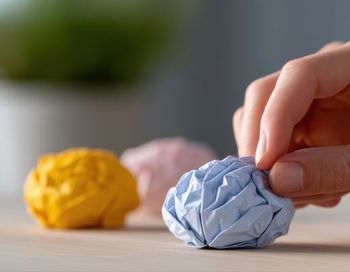
ADHD Therapies Hold Roughly Uniform Benefit in the Long Run
NEW YORK -- Most kids with attention deficit hyperactivity disorder (ADHD) get better over time with treatment, regardless of what that treatment is, according to observational follow-up of a major study.
NEW YORK, July 20 -- Most kids with attention deficit hyperactivity disorder (ADHD) get better over time with treatment regardless of what that treatment is, according to observational follow-up of a major study.
Medication, behavioral therapy, a combination of the two, and usual community care all produced significant ADHD symptom improvement at three years with no difference between groups, found Peter Jensen, M.D., of Columbia University here, and colleagues.
However, "it would be incorrect to conclude from these results that treatment makes no difference or is not worth pursuing," they wrote in the August issue of the Journal of the American Academy of Child and Adolescent Psychiatry.
Indeed, they said, "these data suggest that clinicians should offer hope to children and families." The investigators original Multimodal Treatment Study of Children with Attention Deficit Hyperactivity Disorder, published in 1999, was the first major randomized, controlled trial to compare ADHD treatments. It found that medication alone or with behavioral therapy was significantly better than behavioral therapy alone or usual community care.
The children in the community care group did not receive study treatments, but their personal physicians were given their study assessments and a list of community mental health resources. Treatment was at the personal physicians' discretion and most of the children (about 2/3) did get medication during the 14 month treatment phase, although not in the algorithm prescribed in the study for the medical management group.
For this follow-up study, the researchers assessed outcomes of 485 children two years after the 14-month randomized treatment phase. During those two years, families resumed control over treatment choice.
Patients were ages 10 to 13 during follow-up (mean 11.9), and many changed treatment during the observational phase. At 36 months, 62% of those originally assigned to usual community care and 45% of those initially assigned to behavioral therapy alone were taking ADHD medication at a high level, but only 71% of patients originally assigned to medical management or combination therapy were still taking medication at that level.
"Despite this convergence in use rates across groups by 36 months, medication use rates and total daily doses continued to differ significantly at 36 months," the researchers noted.
Nonetheless, in the intent-to-treat analysis at 36 months, the modest significant advantages found for medical therapy at 24 months had all disappeared. The findings between groups were:
- No differences in ADHD symptoms (medication versus no medication P=0.45, combination therapy versus medicine alone P=0.57, behavioral therapy versus community care P=0.914).
- No differences in Oppositional Defiant Disorder (ODD) symptoms (medication versus no medication P=0.77, combination therapy versus medicine alone P=0.48, behavioral therapy versus community care P=0.60).
- No differences in reading achievement scores on the Wechsler Individual Achievement Test (medication versus no medication P=0.77, combination therapy versus medicine alone P=0.76, behavioral therapy versus community care P=0.13).
- No differences in social skills as rated by parents and teachers (medication versus no medication P=0.90, combination therapy versus medicine alone P=0.61, behavioral therapy versus community care P=0.82).
- No difference in functional impairment measured by the Columbia Impairment Scale (medication versus no medication P=0.61, combination therapy versus medicine alone P=0.30, behavioral therapy versus community care P=0.77).
Across original treatment assignment groups, substantial improvements were seen with an effect size from baseline to 36 months ranging from 1.6 to 1.7 for ADHD symptoms and about 0.7 for Oppositional Defiant Disorder, 0.9 to 1.0 for impairment, 0.8 to 0.9 for social skills, and 0.1 to 0.2 for reading scores.
Even when the effect size was calculated as a function of how many days the children were actually taking medication, there was no significant difference in ADHD symptoms compared with those not taking medication (0.06 units on a three-point scale).
Likewise, medication use during more than half of the follow-up period did not have an impact on outcomes overall (effect size 0.01, P=0.855).
"A possible explanation may be selection effects, in which children doing well on medication may have stopped taking it, whereas those doing poorly while not on medication may have started taking it," the investigators wrote.
There was no difference at 36 months in the number of children who were no longer diagnosed with ADHD or other comorbid conditions across the original treatment groups.
But, in a post hoc analysis, the authors said, "as one might expect if selection effects were operative," participants who discontinued medication from months 24 to 36 appeared to be doing well at 24 months with continued improvement thereafter, whereas those who began high medication use only after 24 months had substantially lower improvement scores at 24 months.
Dr. Jensen and colleagues hypothesized that "this may hold for any modality of treatment" because they found a significant disadvantage to a higher level of educational services at 36 months (P=0.007).
Whatever the reason for the lack of difference between groups, the researchers said they were "struck by the remarkable degree of improvement found in all of the subjects over time."
The benefit for patients may be related to the extra attention brought by participation in the study or may reflect "a natural waning of symptoms," they said. However, "without an untreated control group, no firm conclusions about the possibility of more positive ADHD outcomes can be drawn with confidence."
The follow-up study was supported by grants and contracts from the National Institute of Mental Health and by the Office of Special Education Programs of the U.S. Department of Education and the Office of Juvenile Justice and Delinquency Prevention of the Justice Department.
Newsletter
Enhance your clinical practice with the Patient Care newsletter, offering the latest evidence-based guidelines, diagnostic insights, and treatment strategies for primary care physicians.































































































































































































































































































































